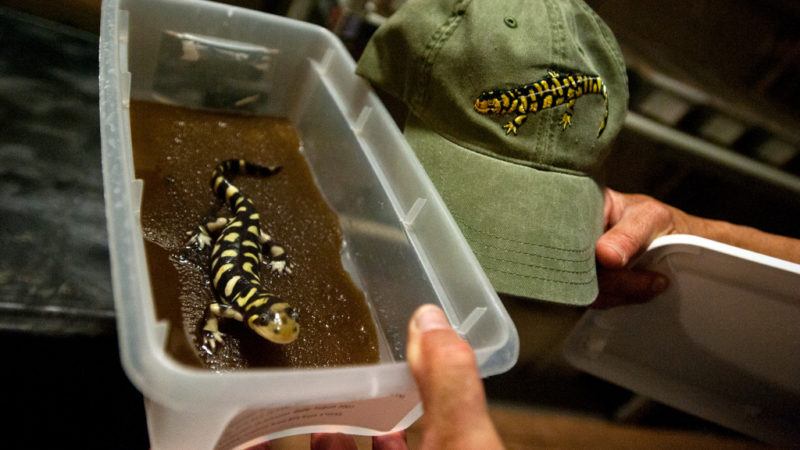
This is a tale of two amphibians and one difficult question.
The amphibians are the endangered California Tiger Salamander and the invasive Barred Tiger Salamander from Texas. Sixty years ago the Texas breed was brought here and kept in ponds as fish bait, but eventually it spread into the wild.
Over the years, the two species started inter-breeding, creating generations of hybrids that share genes from both.
The question is how do you save the one species when its genes are now mixed with those of its main competitor?
Studying salamanders
UCLA researcher Brad Shaffer loves salamanders.
He was obsessed with them as a child, and now as an adult, he studies them. In his lab there are more than 150 specimens in small plastic cages.
“This is a California Tiger Salamander,” he said, holding a six-inch, black and yellow striped creature. These genetically pure native salamanders are endangered.
Next, Shaffer shows off a larger, beefier creature: the Barred Tiger Salamander.
“They are just in all ways a bigger, badder salamander,” Shaffer said.
Super hunters
When the native California Tiger Salamander mates with the Barred Tiger Salamander they produce a hybrid.
These hybrids can be more aggressive, larger and are often better hunters than either parent.
Maureen Ryan is a researcher at the University of Washington. She’s studied these hybrids and how they interact with other species.
“What we found was, basically, in ponds that had hybrids they ate nearly everything in the pond. Hardly any frogs were able to survive. Hardly any larval newts.” Ryan said.
Ryan says these super hunters are becoming common in some sensitive habitats, where their super appetite poses a problem.
“They could dramatically affect the whole pond eco system.”
Only a third of all California salamanders have hybrid genes, but hybrids are spreading in areas where pure native salamanders once thrived.
Saving a species
Collette Adkins Giese is with the environmental advocacy group Center for Biological Diversity. The group helped to get the California Tiger Salamander listed as an endangered species.
She says it’s hard to come up with a clear plan for dealing with these hybrids since they share traits of the protected native species and the invasive one.
“There is a moral component there too, in terms of how close to a California Tiger Salamander do you have to be to qualify for protection?” Adkins Giese asked.
“It becomes a very tricky management issue trying to figure out what to do,” UCLA’s Brad Shaffer said.
One strategy is to alter the animal’s natural habitats so they favor salamanders with native traits.
Native salamanders thrive in shallow ponds that dry frequently – hybrids don’t.
The California Department of Fish and Wildlife is hoping to fund a project to remove hybrids from parts of Santa Barbara County.
A disaster and a train wreck
Shaffer says for now, more research needs to be done to help identify scenarios that would allow the native salamanders to thrive.
He points out, from an evolutionary biologist’s perspective, the situation is a fascinating natural experiment.
But when he thinks about what this means for California and a species he loves, a serious look comes over his face.
“Then I feel like this is a disaster and a tragedy and a train wreck. And I want to do everything I can to reverse it.”
